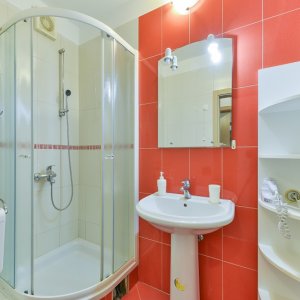Distances from:
Beach:5 m
Center:2000 m
Supermarket:300 m
Bank:2000 m
Pharmacy:2000 m
Disco Club:2000 m
Doctor:2000 m
Petrol:9000 m
Drive Way:300 m
Airport:25000 m
Welcome to
Vir Surroundings





Welcome to Vir!
An island with the area of 22 km located northwest of the city of Zadar and only 12km from the ancient city Nin.
On the island with approximately 900 inhabitants is widespread wine cultivation and fishery.
The island is partly covered with pine forest and partly with dense evergreen underbrush and grass.
Island Vir is one of 300 islands and islets of Zadar’s archipelago in the north-western Dalmatia.
Apartment 1
Apartment 2
Apartment 3
Apartment 4
Capacity & Prices of accommodation
For mobile users:
Swipe left / right to see the whole table
Type of
accommodation
m2 / Stars
Bedroom(s)
Persons
01.06. - 30.06.
01.09. - 30.09.
01.07. - 31.08.
01.10. - 31.05.
1) Big Apartment
- /
8 persons
On request
On request
On request
2) Brown Apartment
- /
4 - 5 persons
On request
On request
On request
3) Blue Apartment
- /
4 persons
On request
On request
On request
4) Yellow Apartment
- /
2 + 2 persons
On request
On request
On request
The accommodation´s tax is included in the prices.
Advance payment: 30 %.
Discount for longer or out-season accommodation.
Departure: up to 10 hours
Arrival: after 14 hours
| Type of accommodation |
m2 / Stars | Bedroom(s) Persons |
01.06. - 30.06. 01.09. - 30.09. |
01.07. - 31.08. | 01.10. - 31.05. |
|---|---|---|---|---|---|
| 1) Big Apartment | - / | 8 persons | On request | On request | On request |
| 2) Brown Apartment | - / | 4 - 5 persons | On request | On request | On request |
| 3) Blue Apartment | - / | 4 persons | On request | On request | On request |
| 4) Yellow Apartment | - / | 2 + 2 persons | On request | On request | On request |

































































